<Report from overseas office> [Thailand] What Japanese Don't Know About the Grab Distribution Revolution
- Release date: Dec 02, 2019
- 10172 Views
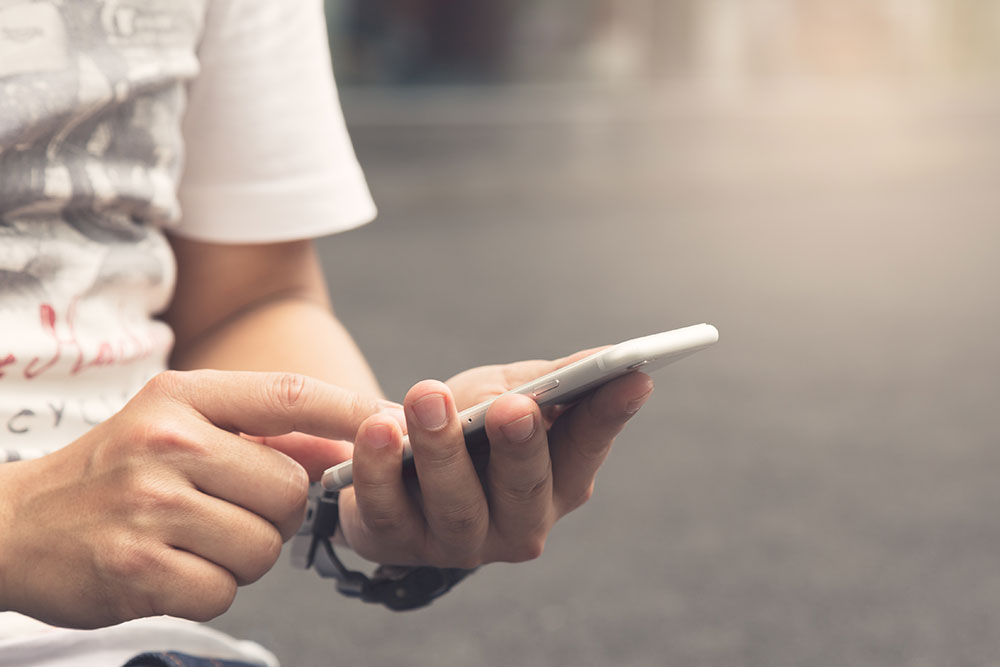
1. Introduction
2. Again, what is Grab?
Grab is a "magical infrastructure" for the efficient movement of people, goods, money, and information. Initially, Grab started out as a ride-sharing service, but it may be easier to call it a cab app like Uber. Grab has made it possible to hail a car to a predetermined location, with clear accounting that was not always sufficient with conventional metered taxis. This is almost the only feature that has been introduced in travel blogs for Japanese people, but this is only the tip of the iceberg, although it is an important feature of Grab.The following slides are excerpts from the materials for the Thailand seminar: In March, there were only seven services available, but by August, the number had grown to ten. In November, one more service was added, and the company continues to grow at an astonishing pace. The application is constantly evolving to be more user-friendly for users.
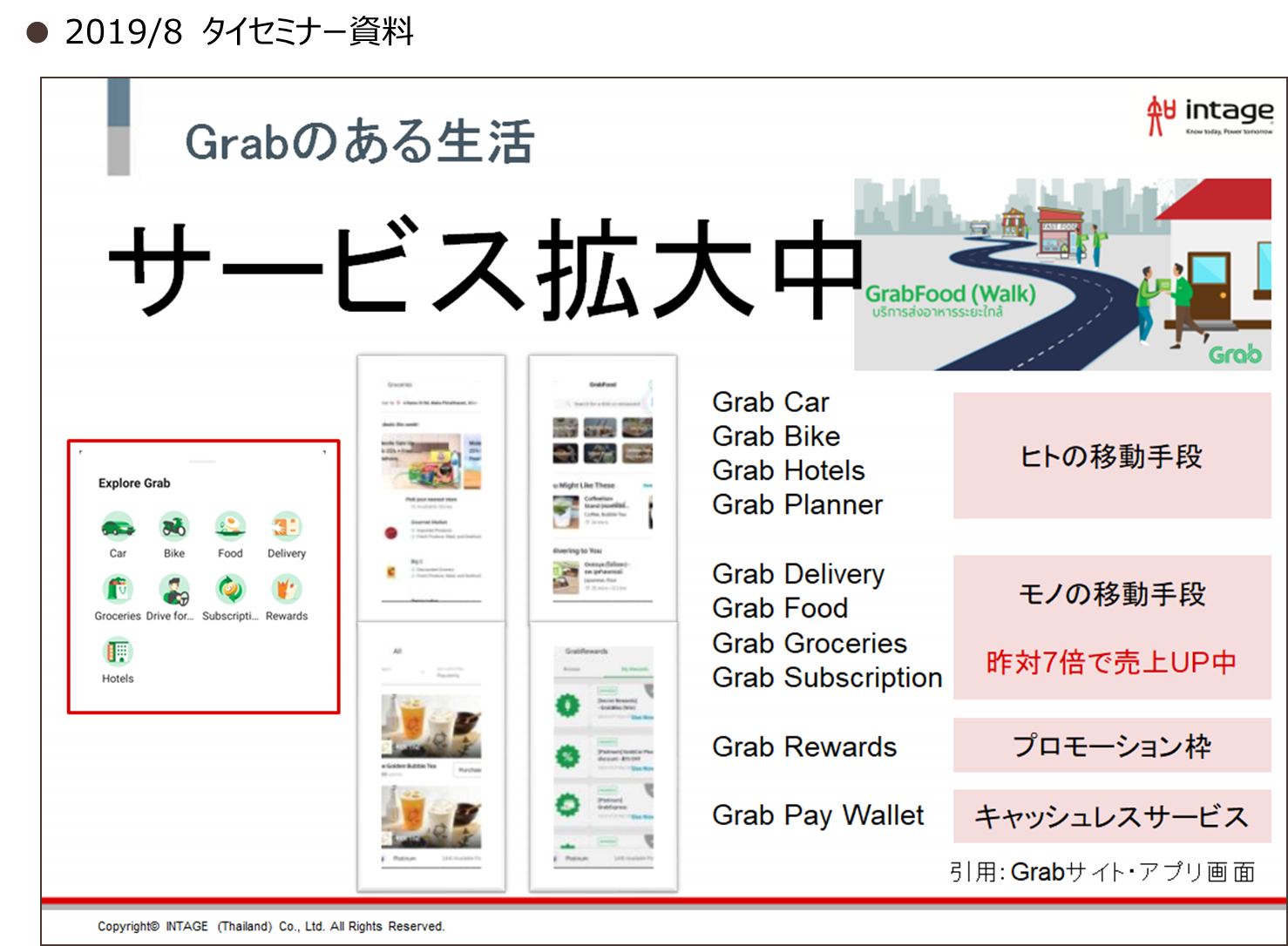
3. human mobility
I have already introduced human mobility in my column, so please refer to that article ([Resident Column] Thailand's Ride-Sharing Situation - The Influence of Grab). Human mobility tends to be biased toward convenience on the passenger side, but according to my estimation, a new car priced at less than 3.5 million yen, if you register as a Grab driver, or service provider, and perform a certain level of operation, your monthly repayment will be enough to offset the cost of a loan over four years. In other words, Grab gives you the opportunity to buy a car you might not have been able to afford. We need to fundamentally change the notion that “more ridesharing = a society that doesn't buy cars.”
In case you were wondering, Central Group, one of Thailand's leading conglomerates, reportedly took a stake in Grab in January 2019. In fact, Grab is still illegal, but the moment I heard this news, I had a hunch that it would be legalized in the near future. Although the dynamics and agendas of the conglomerates are at work, I think the benefits of the Grab system are largely due to the corporate philosophy of Grab: to create jobs, stimulate the economy, increase social productivity, and contribute to the realization of a better life.Currently, people can book not only ordinary taxis, but also private cars and motorcycles driven by ordinary people, luxury cars like BMW, SUVs, and even welfare vehicles whose seats can be used as wheelchairs. And finally, it is now possible to call a driver on demand.
4. mobility of goods
If you order with Grab Food, you can have food from the restaurant you want to eat delivered to the location you specify. Depending on the restaurant's traffic and road conditions, you can also check the real-time delivery status on the app, such as “Cooking is in progress” or "Delivery will be ready in a few minutes. If you order in bulk, you can get "Free delivery! or "Free juice now! and other promotions, our employees say they use the app two or three times a week for lunch. Pepsi Cola often includes a Pepsi with food orders, whether in collaboration with the restaurant or with Grab. This could just be because Pepsi is simply popular, though.
Grab has been experimenting with this concept in Indonesia for a while now, and now it has expanded to Thailand. A good example is a new Thai restaurant that opened in the middle of this year in a corner of a secluded parking lot in my area. It was obviously located far away from the main street, and I remember wondering what kind of sense they had in opening a restaurant here, despite the signage. The interior was also very simple, less than the finish of a standing noodle shop in Japan, for example. I wondered how this restaurant was going to survive when there were many high-end restaurants around it. I knew the answer right away. While few customers were eating or drinking inside the restaurant, the line of Grab delivery bikes outside the restaurant was increasing day by day. This restaurant was a ghost restaurant that focuses on home delivery orders from Grab and others. When I checked the restaurant's website, there were several restaurants that clearly stated "Grab" after the restaurant's location. I later found out that this was a famous restaurant, but it was mutually beneficial for the customers to be able to enjoy the food at their homes or other places convenient for them, rather than having to go to a crowded restaurant and wait in line.
Grab Food has since evolved and finally launched a service called Grab Food (Walk). The new service allows people to become delivery persons on foot as long as they are within 1km of the user placing the order, whereas previously they had to have a motorcycle. In other words, the absolute number of people who can provide Grab's service can be dramatically increased. The key point is not only to increase the benefit to the customer by reducing the delivery time, but also to create new jobs by allowing people who do not have a motorcycle to become a delivery person. I once saw a young man carrying a Grab Food delivery bag near my Thai language class. He was dashing around town on a shared bicycle, making his way to his delivery. According to the information on the website, you can get 50 baht (about 180 yen) per delivery. As a resident of Thailand, I was curious to see what kind of experience I could have as a delivery person, so I immediately tried to apply for the job, but unfortunately, I was turned down over the phone because I could not register without a Thai citizen ID number. However, the phone call came right after I registered on the application, so I was amazed at how quickly they responded to my request.
Inspired by the ghost restaurant, I wondered if it would be possible to do the same thing not with food, but with products sold in drugstores. I also wondered if it would be possible to go further and sell products directly from the manufacturer. I wondered if it would be possible to deliver products to consumers through Grab even if there were no stores.In fact, supermarkets such as Tops have "opened" stores on Grab Grocery, and with Grab, you can buy the products sold at Tops, especially fresh foods, without having to go to a physical store. You can even specify the time of delivery. All you have to do is specify a physical store near your place of residence, place an order to that store via Grab, and a Grab delivery person will deliver the goods. However, in this case, the number of stores greatly affects the convenience of users. In this case, however, the number of stores greatly affects the convenience of users. If you are a manufacturer that does not have a store but produces attractive products, you can have a "ghost shop" like Grab Food, a warehouse function that is the equivalent of a kitchen in the case of Grab Food, which will allow you to have more touch points with consumers through Grab. I conducted an independent survey to confirm this. According to our survey results, the usage rate of Grab Grocery is still around 10%. (Figure 1)
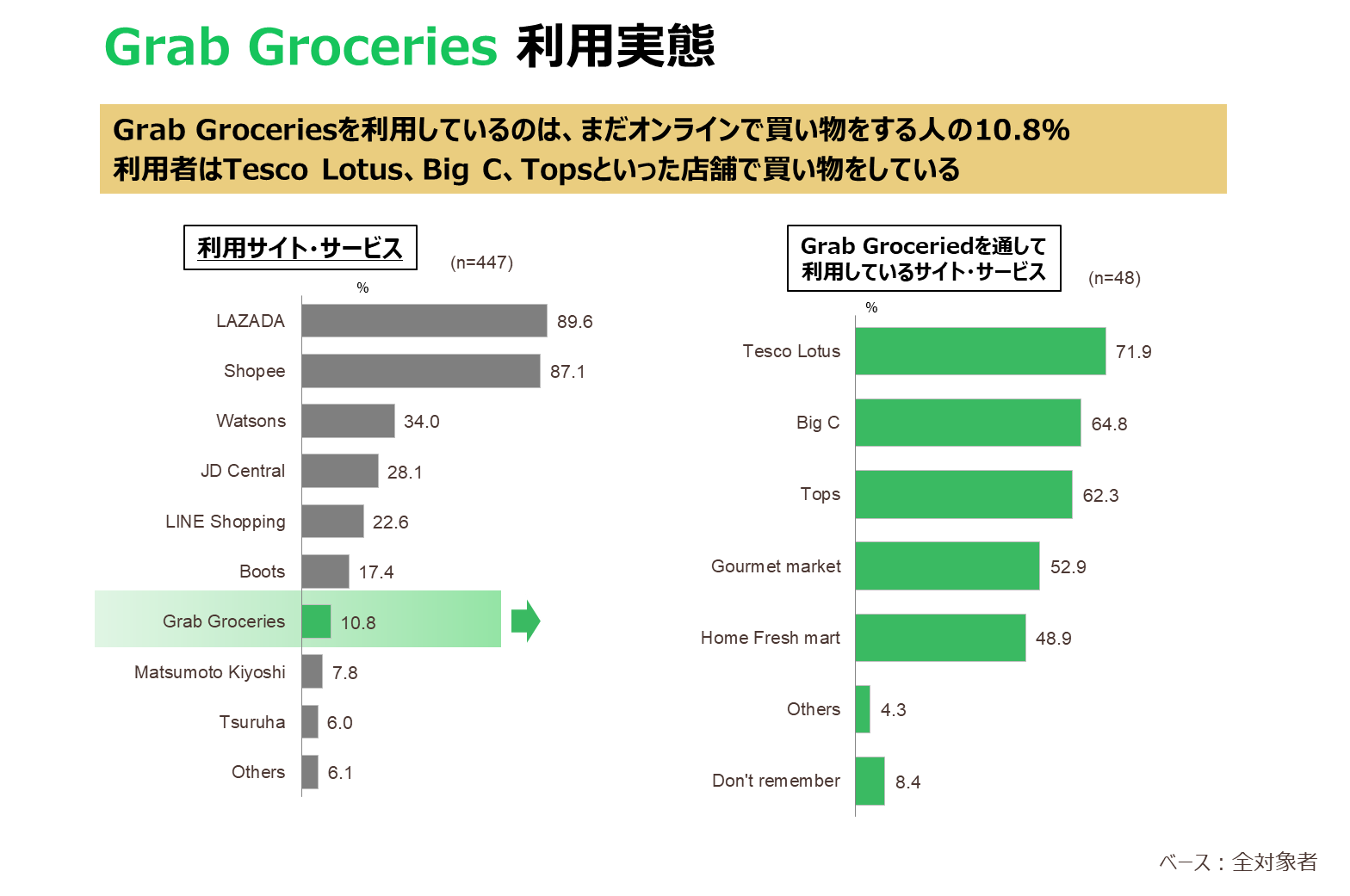
Figure 2
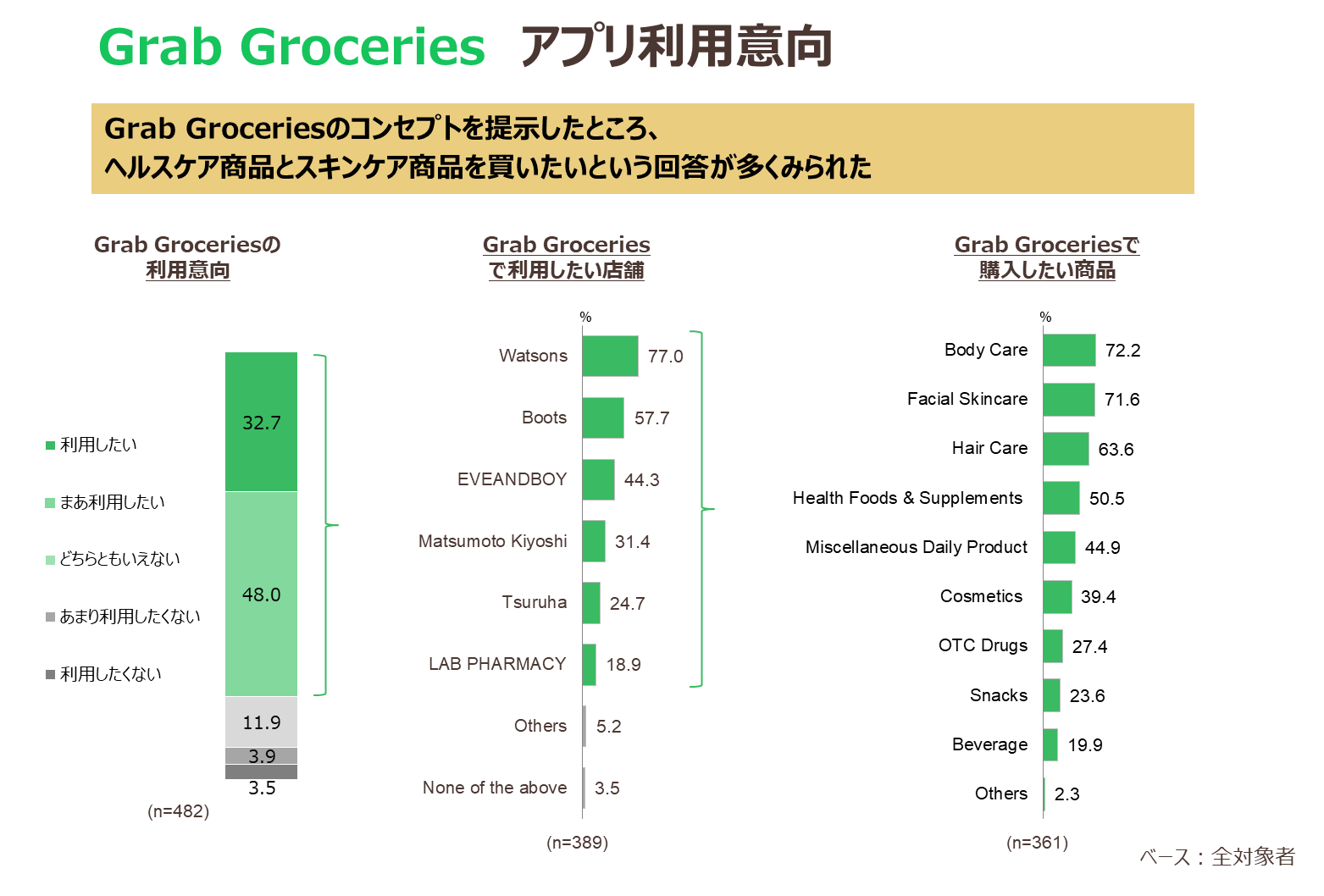
Heineken also announced a beer delivery service in September in partnership with Grab. The direct sales model is now a reality with Grab.
5. mobility of money
Personally, I am very much looking forward to the launch of a new service called "Grab Regi. As mentioned above, Grab Food is already a service that brings food from a restaurant (or, indeed, from a street vendor) to the location of your choice. On the other hand, there are times when you want to visit a restaurant where you can order from Grab Food, and since ordering from Grab Food is based on card payment using the app, all you have to do is wait for delivery. In other words, payment is completed on the app. On the other hand, in actual restaurants, payment is usually made after the meal is served. Although I don't think this is the case in all restaurants, in my experience, for some reason, you often have to wait quite a long time after the "Check! If Grab Food can be used to place orders, it would be a good idea if Grab provides a cash register system in the actual restaurant and analyzes the data to make use of it in the restaurant management. I can't stop thinking about it.
Furthermore, it should be possible for customers who actually visit the stores to place orders in advance. In Thailand today, and especially in Bangkok, “shortening time” is an essential value-added service. The more effective the use of time, the more likely it is to be supported. The reason is that in Thailand, there is less free time in a day than in Japan, due to the transportation situation where people have to spend 3 to 4 hours a day for a round trip to work by car, a society where both workers are commonplace, and the time required to pick up and drop off children by car, etc. Although the 24 hours a day requirement is the same all over the world, the breakdown of the actual time available after subtracting the time spent sleeping is much smaller. However, when the time available for work is subtracted from the time available for sleep, Thailand can be said to be a society that seeks time efficiency more than the Japanese.
6. information mobility
The Grab app has a point system called Rewards that accrue based on the amount spent. Using these points, you can enjoy a variety of benefits. The one I enjoyed the most was a free movie ticket. Points can also be used for a variety of other purposes, such as coupons for Starbucks, fast food, etc., and fitness club vouchers. They change very rapidly, so you can't always expect the same point rewards. For example, there is a large campaign (this is in the form of a lottery) to coincide with the launch of the new Huawei P30 Pro. In this way, the use of points itself is a promotion; Grab is fulfilling its function as a medium.
When using Grab for travel or business trips, it is rare to be aware of such rewards, but when using Grab as an infrastructure for daily life, I feel that promotions are extremely important as a point of contact with new products and services.
Apart from the online media function, Grab Taxi (car), for example, may also have value as a promotional site for so-called “product sampling” on Grab. Many users use Grab for transportation purposes, so what would happen if sampling was conducted in a moving car? In particular, compared to sampling on the sidewalk, there may be an advantage in understanding and recognizing the product. If a product that is not very familiar to the user is sampled in a moving vehicle, the time spent looking up information about the product may be much more relaxed than when sampling on the street while walking. Or, word of mouth on social networking sites, such as "I got this when I took a Grab ride! This is a hypothesis and has not been confirmed.
This is a hypothesis and has not been confirmed, but it is likely that Grab receives a certain amount of advertising media revenue from this kind of media function. I imagine that the revenue is passed on to the drivers and delivery staff. In fact, the application for Grab drivers states, "You can earn 20,000 baht (approx. 72,000 yen) per week. Of course, it depends on the person's availability, but as mentioned in the Human Mobility section, not only is it realistic to pay back a car loan, but it is also much more attractive than a bad job. A household income of over 5,000 baht (about ¥180,000) per month in Bangkok is equivalent to the level of the top 20% of households. Also, Grab Food is 50 baht (180 yen) per delivery. It is clear that Grab Food is not a system where a percentage of the order fee goes to the delivery person's pocket, considering that a cup of Thai tea can be purchased for 50 baht, and they do not have the idea of sharing the sales of one trip between the company and the driver or delivery person, but rather they have other revenue sources and are generous with compensation to make their employees feel good about their work. That must be the business model for Grab, perhaps.
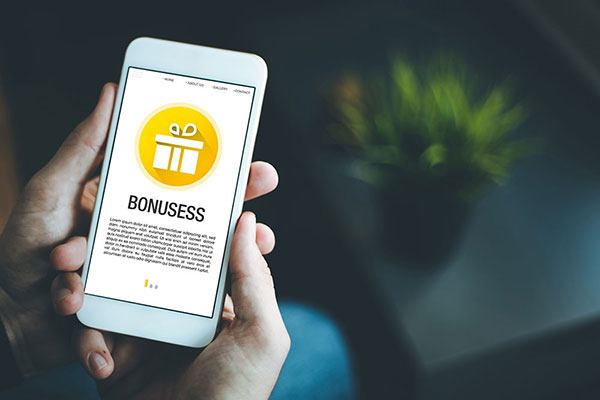
7. finally
In this way, people's lifestyles are undergoing a major change with Grab. Until now, it may have been thought of as merely a means of transportation for people. However, I believe that Grab will play a significant role in the future, especially in terms of mobility of goods and information. The possibility of delivering products to consumers via Grab even if there are no stores is something that needs to be explored, but the name recognition of the store itself is important as a prerequisite. However, the name recognition of the store itself is important. I personally have high expectations for Grab Regi. I think this has the potential to be a data revolution on a different level than the distribution revolution, and I will keep an eye on it along with the Grab Pay Wallet (although it is still at a fantasy level).-
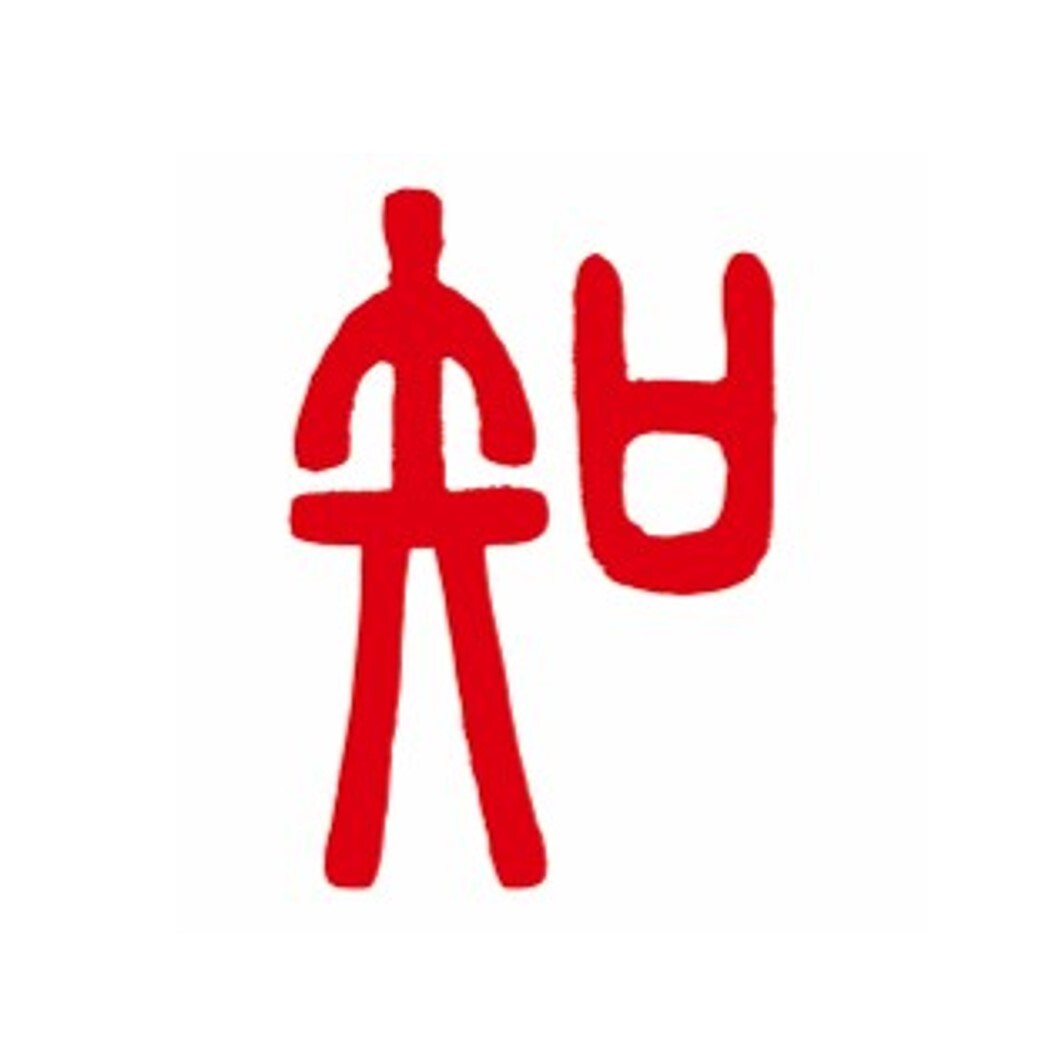
Author profile
Daisuke Aoba
Male researcher in his 40s living in Thailand. He has visited more than 30 countries in the past. He believes in seeking out the best for the consumers in the country and always trying to be close to their feelings. He continues to post his own global gourmet posts, which are viewed about 1,000 times a day, mainly in Thailand.
-

Editor profile
INTAGE
***
 Global Market Surfer
Global Market Surfer CLP
CLP